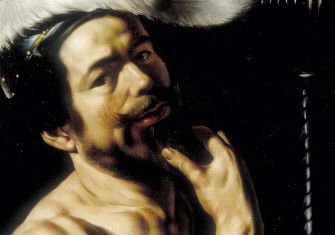The Theft of the Ghent Altarpiece
When a priceless altarpiece was stolen from a Belgian cathedral it sparked a 90-year hunt. The crime remains unsolved.

Early on the morning of 11 April 1934 the sacristan of St Bavo’s Cathedral in Ghent stumbled on a crime scene. The Ghent Altarpiece – a vast polyptych, painted by Hubert and Jan van Eyck – was in its usual place in the Vijd chapel; but where one of the panels depicting the Just Judges had been, there was now a gaping hole.
By then the Ghent Altarpiece already had a chequered history. Commissioned by the wealthy merchant Jodocus Vijd in the early 1420s, it had been installed in the family’s chapel in the hope of encouraging worshippers to pray for his soul. But it was also intended as a testament to his wealth and prestige. One of the first artworks ever to be painted in oils, it was undeniably lavish, overflowing with saintly figures and glittering colours. In the centuries that followed it became one of the most desirable artworks in Northern Europe. It was nearly destroyed by Protestant iconoclasts; plundered by Napoleon and taken to Paris; broken up, pawned and sold to the king of Prussia; and finally captured by the German army during the First World War.







